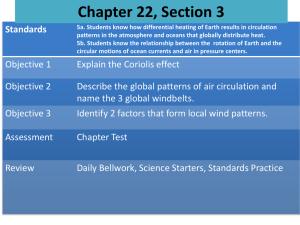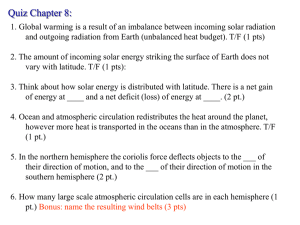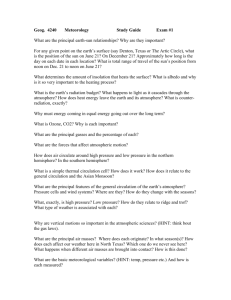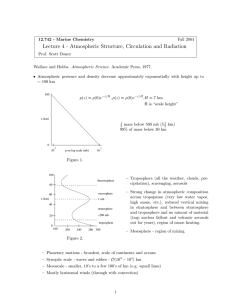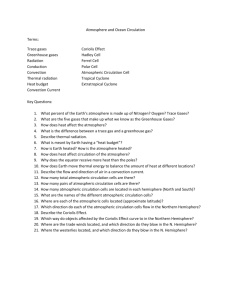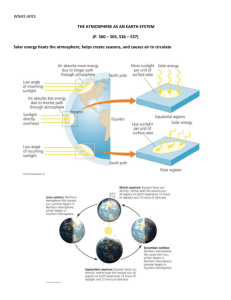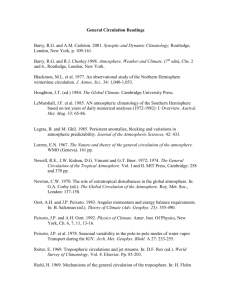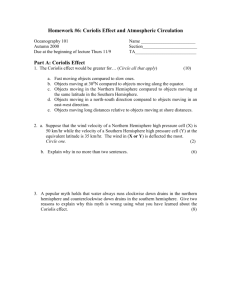File
advertisement
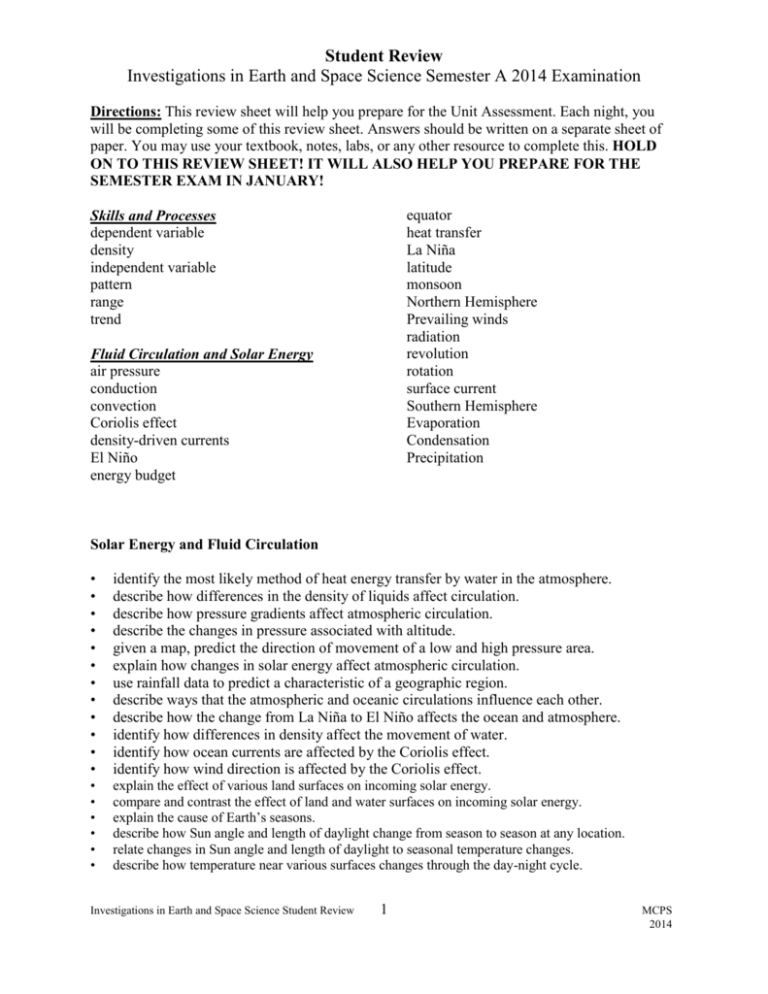
Student Review Investigations in Earth and Space Science Semester A 2014 Examination Directions: This review sheet will help you prepare for the Unit Assessment. Each night, you will be completing some of this review sheet. Answers should be written on a separate sheet of paper. You may use your textbook, notes, labs, or any other resource to complete this. HOLD ON TO THIS REVIEW SHEET! IT WILL ALSO HELP YOU PREPARE FOR THE SEMESTER EXAM IN JANUARY! equator heat transfer La Niña latitude monsoon Northern Hemisphere Prevailing winds radiation revolution rotation surface current Southern Hemisphere Evaporation Condensation Precipitation Skills and Processes dependent variable density independent variable pattern range trend Fluid Circulation and Solar Energy air pressure conduction convection Coriolis effect density-driven currents El Niño energy budget Solar Energy and Fluid Circulation • • • • • • • • • • • • identify the most likely method of heat energy transfer by water in the atmosphere. describe how differences in the density of liquids affect circulation. describe how pressure gradients affect atmospheric circulation. describe the changes in pressure associated with altitude. given a map, predict the direction of movement of a low and high pressure area. explain how changes in solar energy affect atmospheric circulation. use rainfall data to predict a characteristic of a geographic region. describe ways that the atmospheric and oceanic circulations influence each other. describe how the change from La Niña to El Niño affects the ocean and atmosphere. identify how differences in density affect the movement of water. identify how ocean currents are affected by the Coriolis effect. identify how wind direction is affected by the Coriolis effect. • • • • • • explain the effect of various land surfaces on incoming solar energy. compare and contrast the effect of land and water surfaces on incoming solar energy. explain the cause of Earth’s seasons. describe how Sun angle and length of daylight change from season to season at any location. relate changes in Sun angle and length of daylight to seasonal temperature changes. describe how temperature near various surfaces changes through the day-night cycle. Investigations in Earth and Space Science Student Review 1 MCPS 2014
